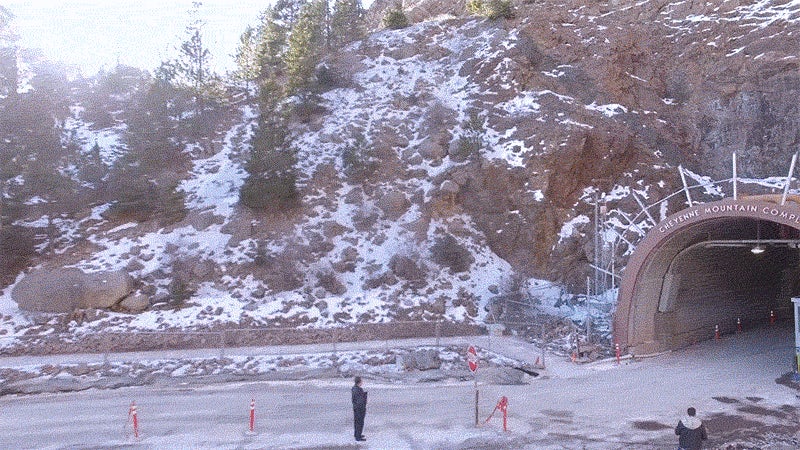
Fifty years have passed since the Cheyenne Mountain Complex went fully operational. Now, the US Air Force has given us a chance to look inside the legendary military installation made famous by the Terminator series [update: and by Stargate SG-1!].
Located in Colorado Springs at the Cheyenne Mountain Air Force Station, the Mountain Complex has provided a unique and useful space for the Department of Defense since it opened in April 1966. And for Skynet, too. [Update: and for Stargate SG-1!]
As a command and control center for defense against long-range Soviet bombers, it was considered to be a primary target for Soviet intercontinental ballistic missiles—which is why it was built inside a rocky mountain, to withstand a direct nuclear attack. As Airman magazine’s thorough article explains:
The mountain itself is about 9,500 feet tall, and the tunnel entrance sits about 2,000 feet from the top. Though the complex may have changed names during the past five decades, its mission has never strayed from defending the U.S. and its allies. Today, it is known as Cheyenne Mountain Air Force Station, with a primary role of collecting information from satellites and ground-based sensors throughout the world and disseminating the data to North American Aerospace Defense Command, U.S. Northern Command and U.S. Strategic Command — a process Steven Rose, Cheyenne Mountain AFS deputy director, compares to the work done by the stem of the human brain.
The photos and video below give a fascinating glimpse into how one of the most secret military complexes in the world looks in 2016. And you shouldn’t be surprised that it looks familiar, because you’ve probably already seen it in movies such as Dr. Strangelove, War Games, the Terminator series, Independence Day, Interstellar, and video games including Fallout and Call of Duty. [Update: and in Stargate SG-1!]
Now, take a look deep inside this iconic cold war security complex that still watches our skies and shores.















US Air Force Video edited by Travis Burcham, shot by Andrew Arthur Breese:
